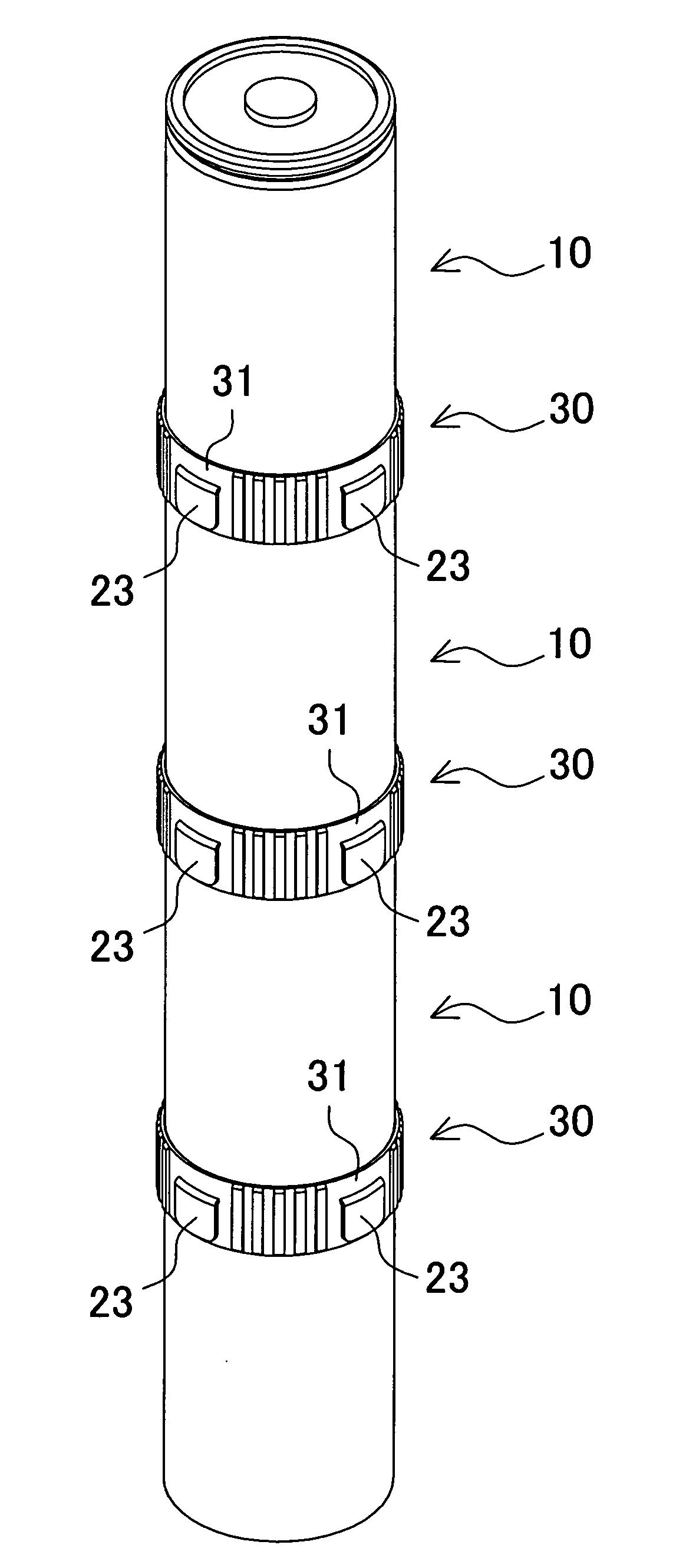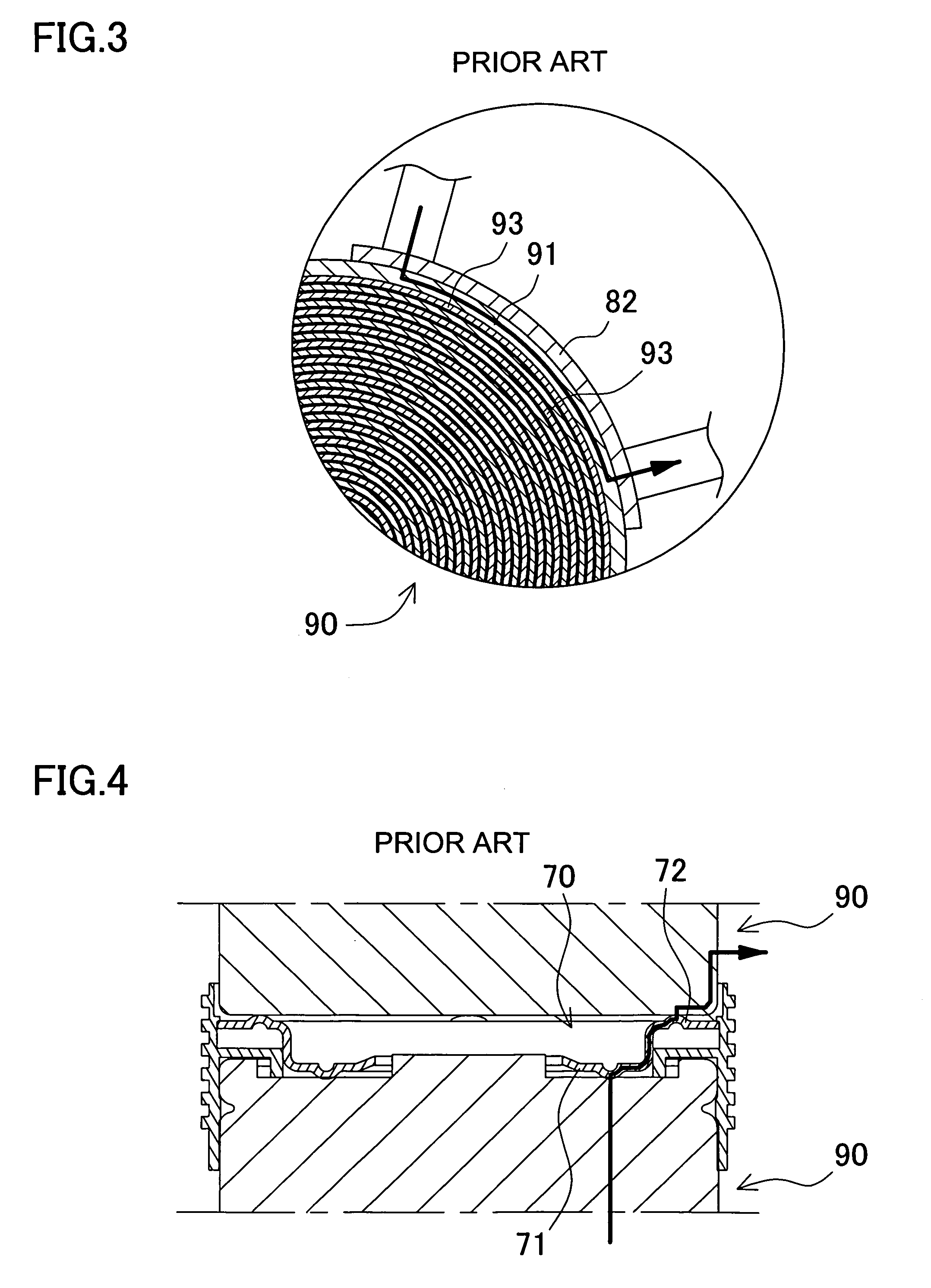Battery module
a battery module and battery technology, applied in the field of batteries, can solve the problems of preventing effective power utilization, affecting the battery, and destroying the battery, and achieve the effect of insufficient quantity production
- Summary
- Abstract
- Description
- Claims
- Application Information
AI Technical Summary
Benefits of technology
Problems solved by technology
Method used
Image
Examples
Embodiment Construction
)
[0040]The battery module shown in FIGS. 5-7 has a plurality of rechargeable batteries 10 connected in series and joined in a straight-line configuration. A plurality of battery modules of this type are in turn connected in series and used primarily in electric vehicles such as the hybrid car. However, the battery module of the present invention can also be used in applications that require large output other than electric vehicles. The battery module of the figures has batteries 10, which are circular cylindrical batteries, connected in a straight-line configuration and in series. However, the battery module can also have rectangular batteries connected in a straight-line configuration and in series.
[0041]Any rechargeable battery, such as nickel hydride, lithium ion, or nickel cadmium can be used as a battery 10. However, the nickel hydride battery and lithium ion battery are well suited for use in an electric vehicle battery module. This is because they produce large output per un...
PUM
 Login to View More
Login to View More Abstract
Description
Claims
Application Information
 Login to View More
Login to View More - R&D
- Intellectual Property
- Life Sciences
- Materials
- Tech Scout
- Unparalleled Data Quality
- Higher Quality Content
- 60% Fewer Hallucinations
Browse by: Latest US Patents, China's latest patents, Technical Efficacy Thesaurus, Application Domain, Technology Topic, Popular Technical Reports.
© 2025 PatSnap. All rights reserved.Legal|Privacy policy|Modern Slavery Act Transparency Statement|Sitemap|About US| Contact US: help@patsnap.com



